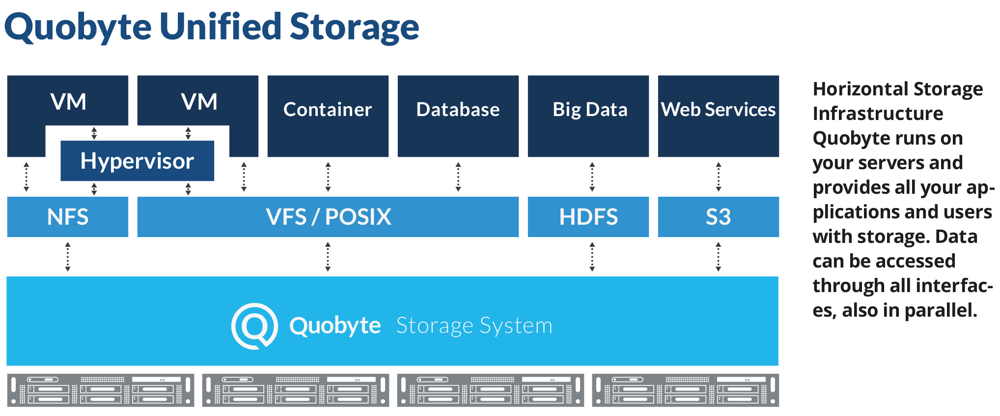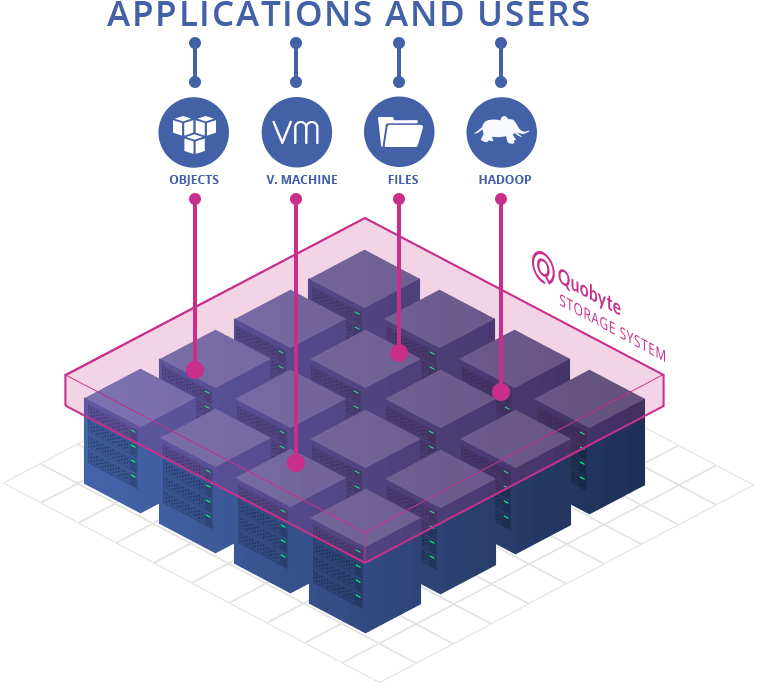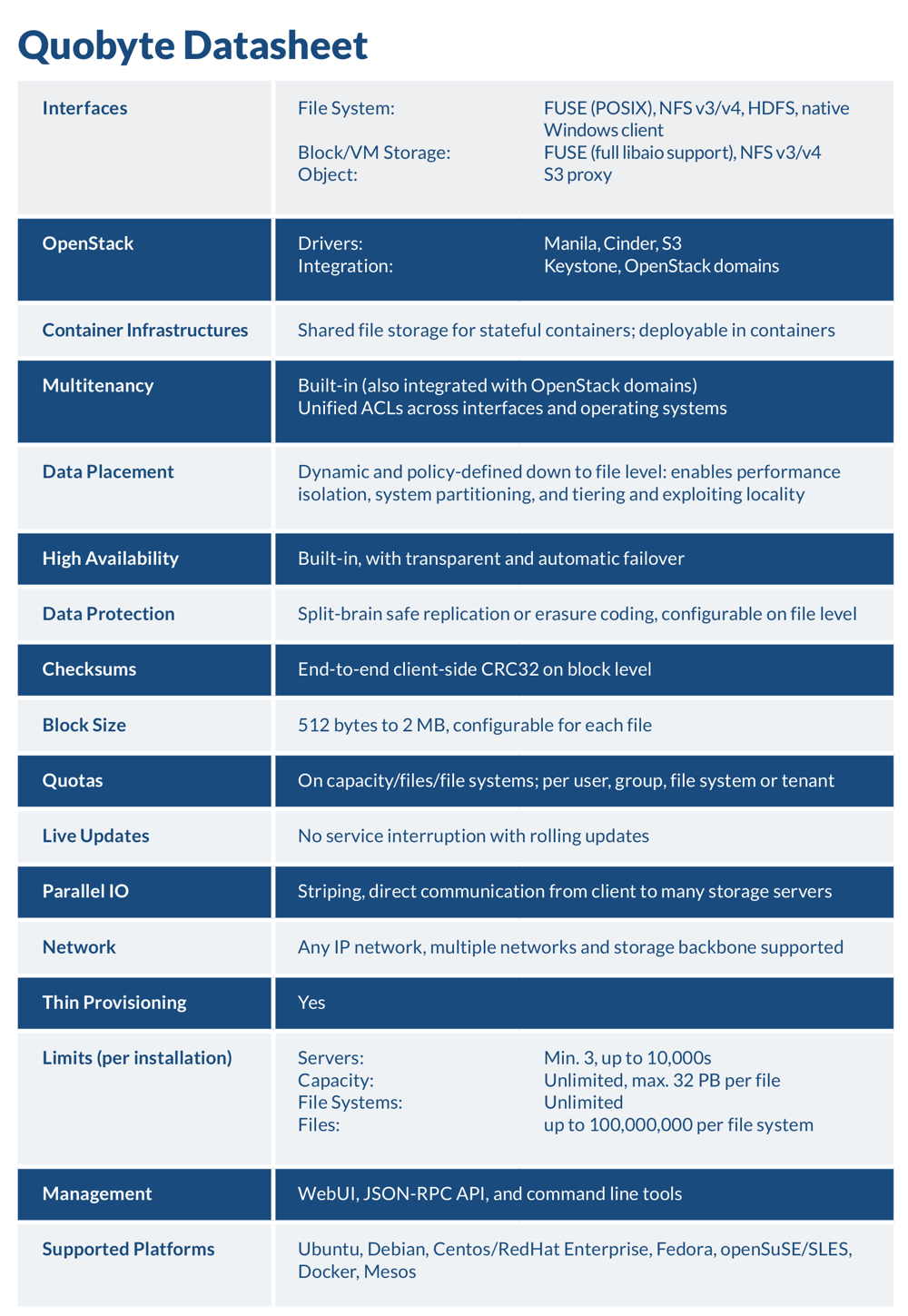Quobyte Strengthens Parallel File System
With erasure coding
This is a Press Release edited by StorageNewsletter.com on August 23, 2016 at 3:06 pmQuobyte, Inc. announced an update for its software storage system, providing a parallel file system with a substantial performance increase and extended data safety capabilities.

The update extends these capabilities with scalable performance erasure coding for file data and the data management features that large organizations require.
“Quobyte is not just another distributed file system; it is next-generation parallel file system technology. Without compromising on file system features, it implements fault-tolerance and data safety purely in software and offers a much more reliable and easy-to-manage HPC storage infrastructure. With its capabilities, it blurs the line between primary and secondary HPC storage and scale-out NAS,” says Felix Hupfeld, CTO, Quobyte.

Company’s software storage system combines a high-performance parallel file system core with native data redundancy and safety features such as replication for data and metadata. The 1.3 release marks another milestone in firm’s value for a range of HPC and scale-out NAS workloads. It improves performance in terms of IO/s and throughput, delivers a sub-millisecond latency for direct I/O, and fully parallelizes metadata operations.
The release also extends firm’s data management capabilities for organizations that have a number of users and file systems through cross-interface ACLs, integrated multi-tenancy and hierarchicalquota support.
Core of the 1.3 update is erasure coding. For sequential workloads, erasure coding combines high storage efficiency and resilience without compromising performance. Just like company’s end-to-end check sums and quorum-replicated metadata, erasure coding is a mechanism implemented in software and is therefore able to turn standard server hardware into a fault-tolerant storage system.
Compared to hardware redundancy like RAID it is not only more economical, but also makes the system much more resilient and easy to manage.
Company’s roots lie within the academic HPC community. Before creating the firm, the two founders, Björn Kolbeck and Felix Hupfeld, together with their team, developed the open source parallel file system XtreemFS at the Zuse-Institute Berlin, one of Germany’s supercomputing centers.
Taking the best parts of their previous work and harnessing the founders’ experience with large-scale storage systems at Google, Inc., the company’s team built a new POSIX-compatible file system with Quobyte, adding technologies to make it suitable for enterprise use. The resulting storage system runs any application and any workload on any kind of x86 server.
Click to enlarge













 Subscribe to our free daily newsletter
Subscribe to our free daily newsletter
